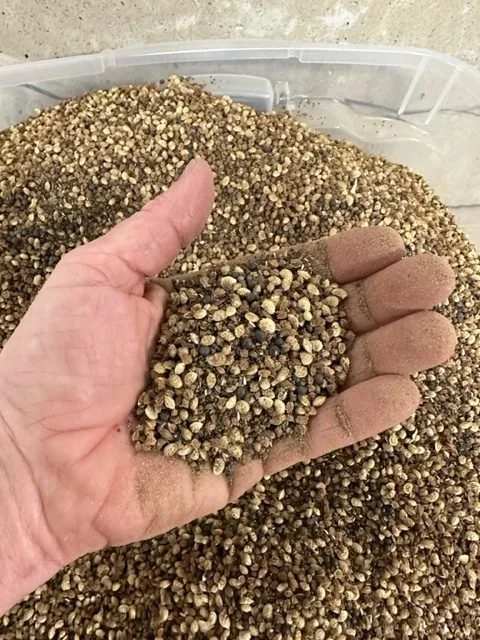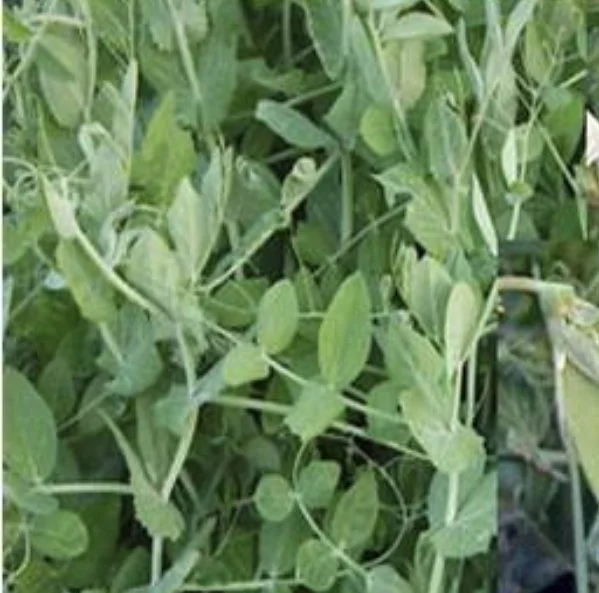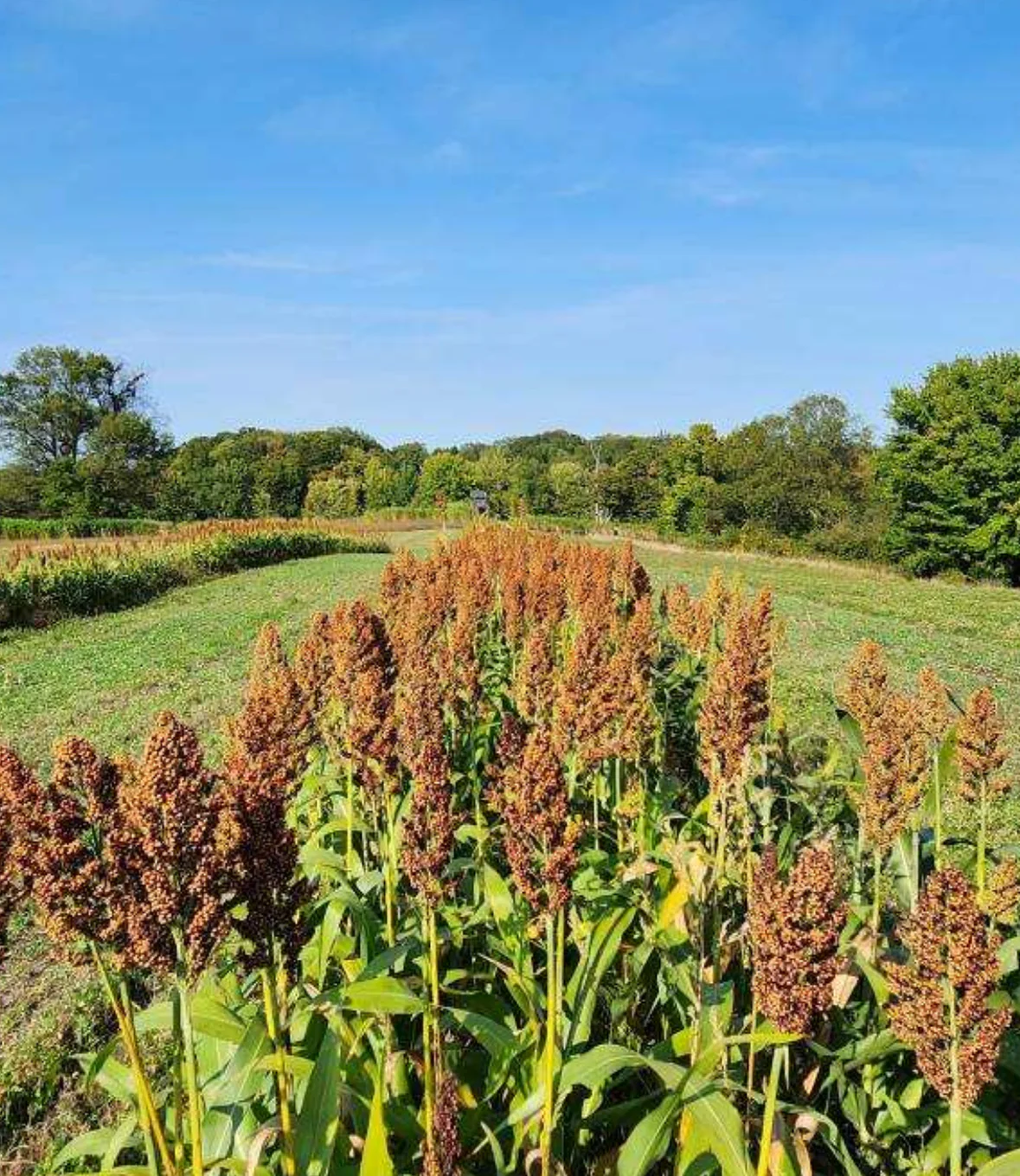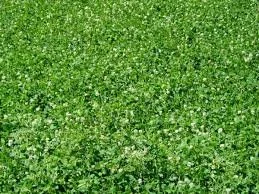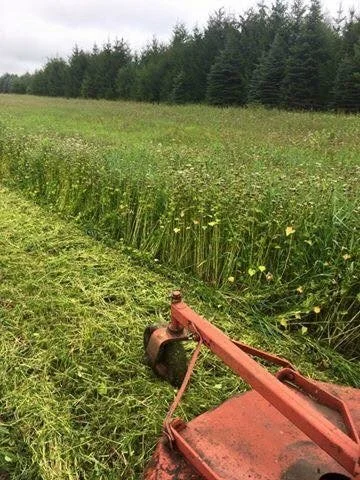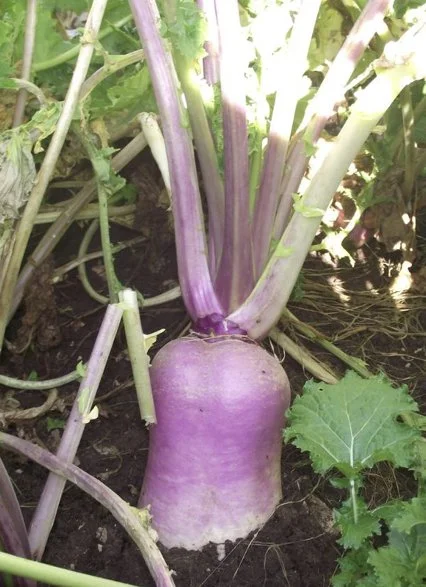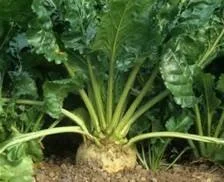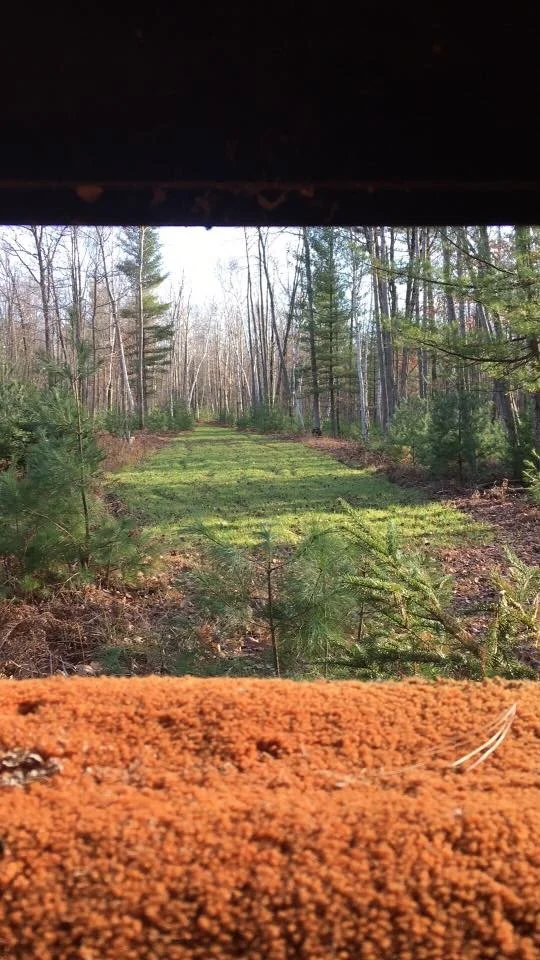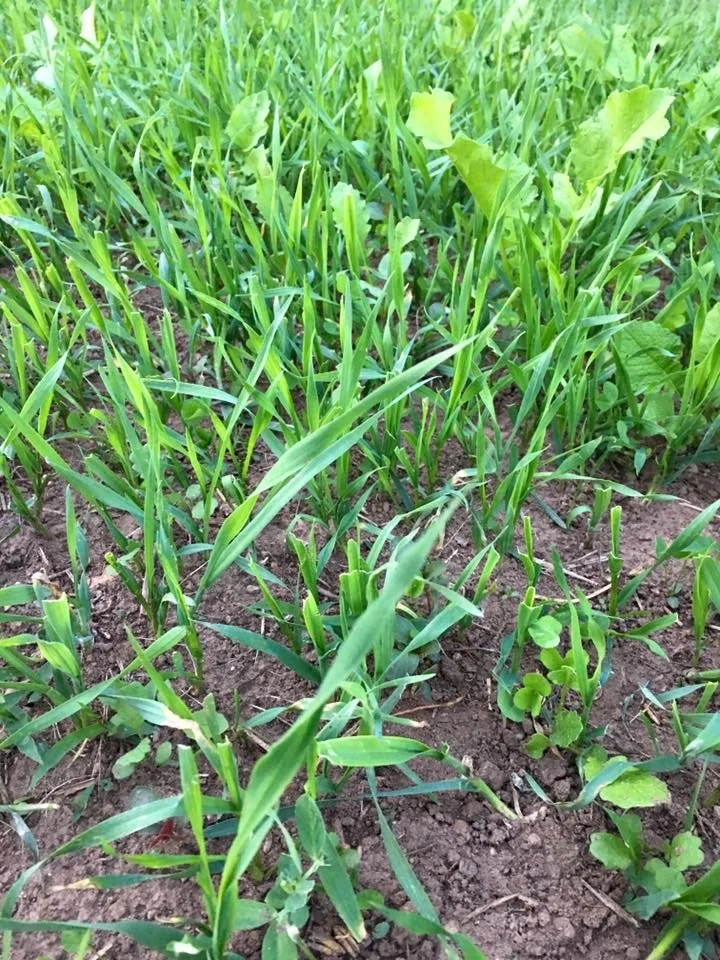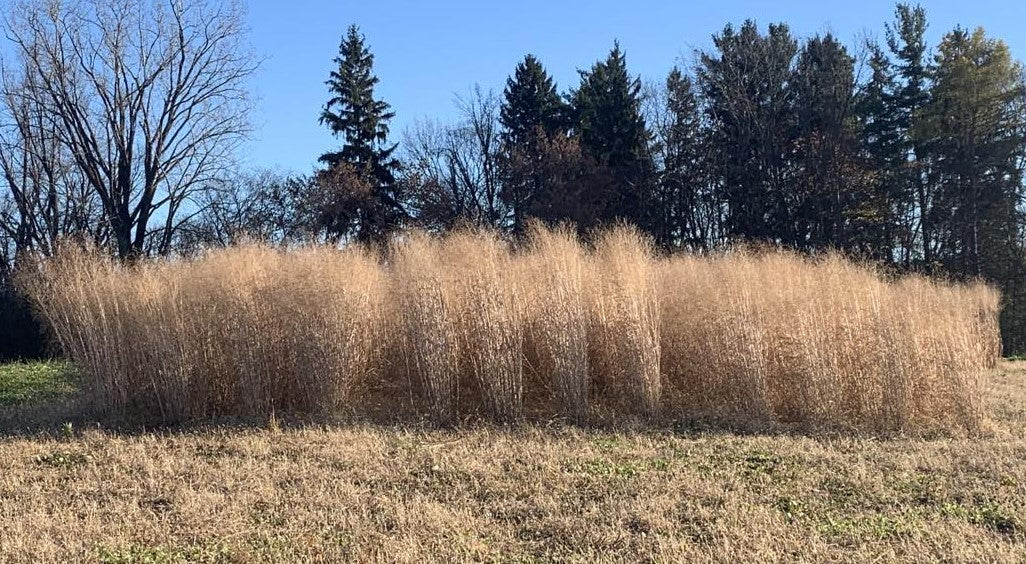
RC Big Rock Switchgrass
-
5lb
50lb
-
This is a new improved variety of Cave in Rock Switchgrass. Many benefits include:
8 to 9 feet in height
Tallest upland switchgrass RC has released to date
Genetically improved for ease of establishment
Excellent choice for deer habitat.
Great wintering habitat for upland birds
9 day later maturity than Cave in Rock
Excellent winter standability
Grows well on diverse soil types. RC Tecumseh is better suited for sandy / dry soils.
Seeding rate is 8-10 pounds per acre broadcast for screening, 7-8 pounds per acre drilled for screening.
Bedding areas can be 6-7 pounds broadcast and 5-6 pounds drilled. The final design of a bedding will determine the pounds per acre need
Clover Blend + Chicory
-
4lb (1/2 acre)
-
How do you make an already outstanding clover blend better? Add some premium forage chicory to it (a whopping 25% in this blend). We took the same premium chicory that was tested and used in our Seclusion Blend and added it to our Clover Blend. Giving it an added punch, especially in the fall. Graze resistant and drought tolerant, this blend tops all in the industry. Our deer utilize our clover plots from Spring green up in March until when the deep snow hits here in Upper Michigan in late December. With over 27% crude protein available, this all-perennial mix will aid in antler growth and help does and fawns when they need it most (spring). This blend is a key to year-round nutrition.
Crimson Clover
-
4lb (1/2 acre)
-
Crimson clover is an annual clover that can be seeded in mid to late summer. This clover will come back the following spring/summer in most areas. It makes a great kill plot planting, or it can be used as a plow down crop (green manure).
Wet Ground Clover
-
4lb (1/2 acre)
-
We have been contacted by many customers about planting in wetter areas. Most products will struggle in wet ground, but this clover has survived. Not much will tolerate prolonged flooding, but a few days won’t kill this. This will also take to acidic soil better than most white clovers.
Egyptian Wheat
-
4lb (1/3 acre)
-
A great product for screening, creating travel corridors, or temporary bedding areas. This will grow 8 to 12 feet tall with proper growing conditions. Hide your plots and fields from poachers or neighbors. Planting rate is 8 to 10 pounds per acre. Deer will not eat this like a milo or a forage grain sorghum.
Forbs & Forage
-
3lb (3/4 acre)
-
We have developed a blend of 12 forbs that can be added to switch grass diversity pockets, woody browse areas or early successional growth areas. This will enhance the daytime food for deer (not replace it). We understand you do not want food plots (brassica, grains, sugar beets) in bedding areas. We are simply going to enhance the natural regeneration you create with a chain saw or in switch grass.
The seeding rate will depend on the amount of natural browse you create. 4 to 8 pounds per acre is very possible.
Whitetail Forage Radish
-
1lb (8lb per acre)
-
Whitetail Forage Radish has become an awesome draw during the months of September, October and November. When combined with a cereal grain planting (like our Fall Forage), you simply have one of the best food plot offerings available. These can be over seeded into standing corn or soybeans in August to double the food offered. The radish also helps the soil by mining nutrients and bringing them up to the surface. A great fall offering that deer can’t resist. Use 4 to 5 pounds per acre in a mix ( added to Fall Forage) or 8 pounds alone.
NWS Green Forage Blend
-
50lb
-
Here at Northwoods Whitetails, we are often asked to design, test and build custom blends for various managers an installers. After Northwoods Whitetails designed and built this blend in 2017 and 2018 for trials in Wisconsin and Michigan, we are excited to bring it to market (2019) for every one. Many of our customers have asked for this type of blend, and its finally available. We use this blend as a green forage base for one side of many of our food plots. With multiple forages deer love (forage soybeans, forage peas. and frost tolerant oats), this is a great blend for food plots in ag areas. Deer love young soybeans and this has proven to be a tremendous attraction in September and October. We recommend using 100 pounds per ace, with a planting date of early to mid August. We also recommend adding 8 pounds per acre of red clover as well as 5 pounds per acre of our forage radishes (both at the time of planting ). Then, a few weeks after planting, we recommend broadcasting 100 pounds per acre of our winter rye. Yes, that is a lot of seed per acre, but remember you are trying to produce the most fall food in a small space.
This is one of our best selling blends and may be out for a brief period from time to time.
Forage Winter Peas
-
50lb (50lb-75lb per acre)
-
A great addition to any brassica or grain blend. They are frost tolerant down to 22 degrees and can take browse pressure.
Seeding rate is 50-75 pounds per acre in a mix or 100 to 150 pounds per acre alone.
Milo
-
3lb
-
Milo has become a great late fall food source for hunters all over the country. This works great where it is impossible to grow corn. When our milo is growing, the deer, bear, raccoons and other wildlife leave it alone. This is a red milo and it is very bitter to deer until fall. This is a great alternative to corn. The milo provides a great source of carbohydrates when cold weather sets in.
This is NOT round up ready.
We use Dual II magnum as a preemergent and 2-4d after germination for broadleaf control if milo is planted alone.
Atrazine or Simazine can be used before planting if only milo is planted.
Planting rate is about 5-6 pounds per acre broadcast. 4-5 drilled on 15 inch row centers.
16,000 seeds per pound and looking for 50 to 60,000 per acre or healthy plants.
If you going to add sugar beets, beans or peas to the planting, use only Dual II magnum as a pre emergent spray.
Seed must be buried at least 1/2 inch
19-19-19 and 46-0-0 for fertilizer ( general recommendations without seeing a soil test)
3 pound bag covers about 1/2 acre.
RC Tecumseh
-
5lb
50lb
-
RC Tecumseh is a new early season variety of upland switchgrass developed from summer switchgrass (originating in Eastern Nebraska). The main advantages of RC Tecumseh are it has excellent yield potential for an early maturing switchgrass and has good tolerance of drought stress. It has low lodging potential, excellent winter hardiness and persistence. RC Tecumseh was genetically improved for upright growth and increased height. It is an early maturing variety, approximately 10 days earlier than Cave-in-rock. RC Tecumseh was selected for reduced seed dormancy and increased seedling vigor. It is well suited for late summer harvest when it reaches physiological maturity. It has a wide regional adaptation to the Great Plains and is an excellent choice for low fertility soils in the Midwest prone to summer drought stress. It is well suited for forage, biomass, soil conservation and wildlife habitat applications. A great choice for sandy soils.
Seeding rate is 8-10 pounds per acre broadcast for screening, 7-8 pounds per acre drilled for screening.
Bedding areas can be 6-7 pounds broadcast and 5-6 pounds drilled. The final design of a bedding will determine the pounds per acre need
Clover Blend
-
4lb (1/2 acre)
-
A great stand of clover is the cornerstone of any food plot program. After years of trying different types of clover, we have settled on 4 perennial varieties of white ladino clover that offer diversity, for our blend. This blend has proven to be drought tolerant during the 2012 summer. Our clover blend will provide your deer with highly nutritional forage from spring thaw until winter. Our clover provides plenty of protein when lactating does and bucks (growing antlers) need it the most. This Clover Blend has been tested side by side against many “big name” seed companies, and the Northwoods blend always came out ahead. Our clover blend can take high grazing pressure, and the deer love the sweet, palatable forage. When it comes to clover for whitetail deer, you have found the best right here with the Northwoods Whitetails Clover Blend.
Medium Red Clover
-
4lb (1/2 acre)
-
Our Medium Red Clover is a 2 year, fast growing clover that many use as a plow down in their food plots. This clover can be seeded in the fall with a cereal grain planting such as our Fall Forage. The following spring, the clover will grow fast and feed the deer from spring to late summer when it can be plowed or tilled under providing nitrogen for a brassica planting. This clover will tolerate slightly higher acidic soils.
Seeding rate is 12 to 14 pounds per acre alone, or 8 to 10 pounds per acre with a mix.
Food Plot Screen: Heavy Duty Variety
-
4lb (1/2 acre)
-
Our food plot screen does exactly what it sounds like, screens food plots. Imagine having the ability to plant a “wall” 12 to 15 feet wide (12 FOOT WIDE MINIMUM) and up to 14 feet high. Access your stand easier, break up you large plot into multiple smaller ones, or just hide the entire plot to encourage more secure daytime use by the deer. If you have a poaching problem from a road, this may be your answer. By planting in late May to mid June, our plot screen will reach 12 to 14 feet high, depending on conditions. We have been testing various plantings since 2006 and feel we have come up with the best annual screen available. Many companies add milo or grain sorghum to their screening products. We strongly recommend you avoid these. Think about it, deer eat sorghum and milo seed heads. Why would you want deer eating your screen? Complete planting, fertilizing and weed control instructions will be included with each order. This can be a great tool you can use to help your success this year. Seeding rate is 8 to 10 pounds per acre. This is a new hybrid made for our company and we are excited to offer it to you! The first year of testing had screens reaching 14 to 15 feet tall in Michigan. And it stayed at 9 to 10 feet tall during winter. A few things to keep in mind with this screen. The soil temperature must be over 65 degrees. The nighttime lows must be above 50 degrees. This hybrid does not do well in wet soils. You are better off waiting a few weeks for the soil to dry out before planting. A late June planting will still reach 12 feet. A late July planting will reach 7 feet tall.
This “heavy duty” food plot screen has been tested in our plots for the last 8 years in the tough Upper Michigan climate. It has withstood freezing rain, snow, high winds and brutal cold temperatures and stayed upright when it matters the most. Unlike most screens, this variety will take winter weather (when planted correctly). A 12 foot tall screen does not do you any good if its on the ground by November 1st. In the first 4 years of testing next to other companies products, this product has preformed the best for late season stand ability in Upper Michigan. Check out the photos of our screens in December.
Soil Builder Blend
-
25lb (1/2 acre)
-
THIS IS THE BEST CHOICE FOR A SOIL BUILDING BLEND ON THE MARKET! A mix for the hunter with less than ideal soil. Our blend contains plants (grains, legumes and sorghums) that will produce tons of biomass that will become organic matter for your soils. This blend has been tested for a few years in sandy soil as well as poor, low quality soil. We have been pleased with the results. We recommend planting in the spring at 50 pounds per acre with 8 pounds of crimson clover or berseem clover. Thinner soils may need to be seeded on the heavier side. A soil test will tell the proper amounts of fertilizer and lime to add. In late summer, we make one pass with a disc to knock the plot flat and seed again at 50 pounds per acre of rye, and 50 pounds per acre of oats into the thick mat of dying vegetation. You can also spray with round up and seed and roll flat two weeks later. You can also spread another bag of the soil builder blend instead of the rye and oats. Our new Fall Forage Sandy Soil Blend is another fall planting option.
Another option is to mow then lightly disc or till the spring planting in. One very shallow pass is all that is needed. Repeat this process for years until the organic matter percentage of your soil is at or above 3% to 4% This mix works well in acidic soils, and some sandier areas. Like any plot, moisture will be key in the success of this planting. Sandy plots will dry out quickly, and drought conditions will kill most plantings.
Pollinator Blend
-
7lb (1 acre)
21lb (3 acres)
-
For years we have been asked to come up with a high quality / no grass pollinator blend for habitat enthusiasts. We feel this blend will fill that demand.
23 varieties of beautiful flowers that bloom from late spring through late summer.
2 flowering clovers
Some oats and partridge peas to aid in planting.
Zero grasses
PLANTING AID:
One way is similar to switchgrass. mow the area in late summer and get it as clean of thatch as possible. Spray 2-3 times late summer , early fall. broadcast (frost seed the following late winter / early spring)
Another option is spray the area at spring green up 2-3 times with round up. Do not use 2-4D 60 days prior to seeding. Broadcast then roll/pack or drill the seed right after 2nd or 3rd spraying. Seeding up to mid-June if spring planting.
If tillage is needed in the spring:
Spray at spring green up. Till or disc 8-10 days later. Smooth the area and pack. Let the weeds come back and spray with round up 1-2 times.
After the last spraying the seed can be broadcast then packed right after, or drilled.
One 7-pound bag plants 1 acre.
Fall Forage Blend
-
25lb (75lb-100lb per acre)
-
This is one of our favorite fall plantings. It contains oats, forage peas, winter wheat and rye grain. It is a great early season bow hunting offering, as well as a great cold weather plot. The oats and peas attract the deer immediately, and the wheat and rye keep them coming back when the cold weather sets in. This easy to plant blend will produce lots of forage all season long. Seeding rate is 75 to 100 pounds per acre. Plant late August to late September. Add some of our Whitetail Forage Radish to make a great draw even better! Many big bucks have been taken over this blend.
Fall Forage Sandy Soil Blend
-
25lb (75lb-100lb per acre)
-
We understand all land and all soil is not created equal. Many folks are in a situation where they have to plant ion sand or sandy soils. Most products available today simple won’t preform as hoped. We are now offering a blend for sandy soils. We have taken our highly successful Fall Forage and adapted it to grow in less than ideal soils. We have planted this for year in trials with great success on Upper Michigan clay and sand. 75 to 100 pounds per acre in mid August with a 50 pound rye over seed in September seemed to get the best results for us. Those planting dates can be moved later the further south from Upper Michigan you are.
Plant 75 to 100 pounds per acre.
Short Season (& Southern States) Brassica Blend
-
3lb
-
A perfect blend of 4 varieties of brassica that will mature in 45 to 60 days. With radishes, a short season turnip, and 2 varieties of forage rape/brassica, this is a perfect brassica blend for a shorter growing season.
1) This blend will work for the land owner in various situations such as:
2) Waiting for consistent rains during a drought, pushing back the planting date.
3) A food plot recovering from a flood.
Land owners in the southern 1/3 of the country.
RC Chippewa Switchgrass
-
5lb
50lb
-
RC Chippewa is a new late season variety of upland switchgrass with genetics tracing back to Cave-in-rock.
Very tall height and high yield potential – likely to reach 7′ tall along the I-35 states, and up to a foot taller moving east to Wisconsin and beyond.
RC Chippewa is very similar genetics to RC Big Rock but is 4-6″ shorter and about 1 week earlier maturing.
Genetically improved for fast establishment, upright growth habit and increased height, making it an ideal choice for high quality habitat for deer.
Provides a better wintering habitat for pheasants and quail than Cave-in-Rock; very good standing switchgrass and resistant to lodging.
Large, seeded variety selected for reduced seed dormancy, increased seed weight and increased seedling vigor.
Well adapted to drill-seeding. Can be frost seeded but may be risky on sandy soil.
Excellent winter hardiness (Zone 4A) for a late season variety
Like Cave-in-Rock it grows well on diverse soil types and has a wide regional adaptation to states in the mid-west and northeast regions (Wisconsin, Iowa, Illinois, Indiana, Michigan, Ohio, New York and Pennsylvania).
A multi-purpose grass variety suited for forage, biomass, soil conservation and wildlife habitat applications.
Best adapted to regions that receive on average greater than 26″ of average annual precipitation
For regions that receive 26-30″ consider a blend of RC Tecumseh and RC Chippewa
For regions that receive more than 30″ use RC Chippewa or RC Big Rock
For regions that receive less than 26″ use RC Tecumseh
Seeding rate is 8-10 pounds per acre broadcast for screening, 7-8 pounds per acre drilled for screening.
Bedding areas can be 6-7 pounds broadcast and 5-6 pounds drilled. The final design of a bedding will determine the pounds per acre needed
Seclusion 360 Blend
-
2lb (1/8-1/4 acre)
-
A new concept to the food plot industry, adding food to bedding areas. By adding tiny plots in and around bedding areas, this gives you another tool to hold deer on your property. Whitetails need to eat during the day while in their daytime bedding areas, now you can provide what they want. This mix consists of a high percentage of premium chicory and a tough, persistent white clover. We have tried various chicory seed in the past, and none compared to the chicory used in this product. In trials last year, this mix provided pictures of multiple mature bucks using the tiny plots during daylight. Seeding rate is 6 to 7 pounds per acre. This blend will work in tiny bedding plots and travel corridors leading to and from bedding & food. A great new concept and a great new blend brought to you exclusively from Northwoods Whitetails & Jake Ehlinger at Habitat Solutions 360.
Northwoods Forage Chicory
-
2lb
-
This is the same high quality, highly attractive chicory we use in the popular Seclusion Blend 360 as well as our best selling Clover Blend Plus Chicory. This forb contains well over 30% protein as well as all the minerals taken up from the deep tap root. This drought tolerant forb can survive long periods of dry weather and will grow in sandy soils. One particular observation we have made through the years is the high attraction (particularly bucks), from late September well into late season. A must have addition to any food plot program.
Buckwheat
-
50lb (1 acre)
-
This is a great spring or summer planting for folks with poor soils. This also works well as green manure or a smother crop for no till planting.
Northwoods Sugar Beets
-
2lb
-
Probably one of the best late season food sources is sugar beets. Deer love them, plain and simple. They will eat the green tops in mid to late fall, then turn to the actual beet itself when the weather turns colder. They provide great nutrition when the deer need it most. Plant these in late May to early June for best results. These are NOT roundup ready sugar beets. Weed control is Stinger for broad leafs and Clethodim for grasses.
Sweet Feast Brassica Blend
-
3lb (1/2 acre)
-
Brassica is an important part of any food plot program. Feeding deer when the cold arrives and the snow flies is just what our brassica blend does. With forage rape, kale, tillage radish, and 3 varieties of turnips, our brassica blend has it all. We don’t use the ordinary turnips you can get at the local feed mills. We have done a lot of research and testing to find the best and biggest kale and forage rape leaves, turnips and radishes to use in our blend. When the first frost hits, the leaves of the plants start to get sweet, just the way deer like it! Even after all the green leaves are eaten , the plot will still be filled with large turnips and radishes for the deer to dig up and eat. Tons of forage from September until late winter for a lot less than the price of “big buck on a bag” seed companies brassica offerings. Just look at the picture. No other brassica blend can produce results like the Northwoods blend can. Better hope your neighbor isn’t using this! Seeding rate is 6 pounds per acre in late July to early September.
The number one food plot seed blend in the country!
Rye Grain/Cereal Rye
-
50lb
-
A must have in any food plotters tool box. This is the most valuable, yet under rated planting available to deer hunters. We use rye in all our destination plots, as well as many of our hunting plots. Some big name companies try to convince hunters that deer wont eat rye, but we have found all across the country that its simply not true. Not only do deer love young rye, the soil building benefits of rye are impressive as well. When fall planted rye comes back in the following spring, its the first green food the deer can eat.
Our 50 pound bags of rye grain (NOT RYE GRASS), are cleaned, tested and ready for use in your plots.
Northwoods Forage Oats
-
50lb
-
We have tested these oats for years in Michigan and Wisconsin and the results are always the same. Deer simply love these oats. This is the same oat variety we use in our Fall Forage and WHS Green Forage Blend. This is a great addition to any food plot. We have seen constant use from September until Mid November in our test areas.
Sundance Switchgrass
-
5lb
-
Item deImproved cross of Sunburst and Cave-in-Rock
A new early season, erect variety of upland switchgrass developed from crossing elite breeding lines of Cave-in-Rock and Sunburst
Tall height and excellent yield potential – can reach 6 1/2- 8′ tall depending on soil type and rainfall
Wide adaptability across the Upper Corn Belt and at least up to winterhardiness zone 4A in the Northern Great Plains. Best suited for use in zones 3B-5A for habitat use and zones 4-6 for farm use where it will be cut and harvested.
It is drought tolerant, suitable for the Northern Great Plains to about 18” annual precipitation areas (much better drought tolerance than Cave-in-Rock)
Genetically improved for low seed dormancy, increased seed size, fast establishment, excellent spring vigor and erect growth habit
Maturity approximately 10 days earlier than Cave-in-Rock but approximately 4” taller
Very good winter hardiness and persistence, tested to be winter hardy to zone 4A but likely can go into 3B
Grows well on diverse soil types throughout its area of adaptation including imperfectly drained soils and soil subject to seasonal flooding. It is also well suited to low fertility sandy soils in the Upper Midwest. It is large seeded and has excellent emergence when drill seeded.
A multi-purpose grass variety suited for forage, biomass, soil conservation and wildlife habitat applications. In the Midwest it can be used in a mixture with Big Rock. In frost seedings it can be mixed with the small seeded Tecumseh
6-7 pounds per acre broadcast for screening, 5-6 pounds per acre drilled for screening.
Bedding areas can be 6-7 pounds broadcast and 5-6 pounds drilled. The final design of a bedding are will determine the pounds per acre need.scription






